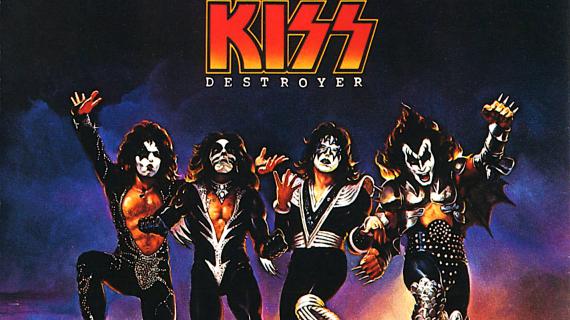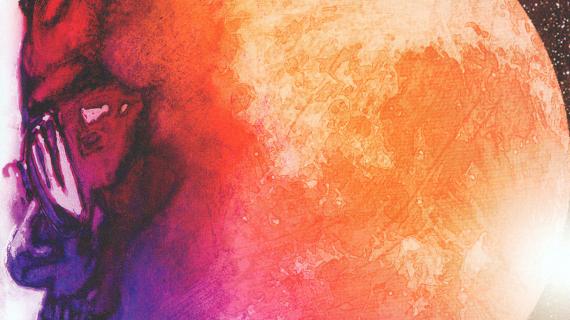I'm a music person. I was born with music. When I was young, it was like I couldn't live without it. As a dancer, music makes me feel like I have to move. It's like it's in my blood. I feel it so strongly. My mother loved dancing at clubs when I was younger. We used to go to the DJ shop and buy all these records. Some kids went to the park with their mom and dad, and we went to the DJ shop. She would take me there and put headphones on my ears to help select the records. Here are a few of my many favorites.
Michael Jackson
Thriller (1982)
Thriller was the first time I saw a Black man sell so many albums worldwide. It was produced by my king, Quincy Jones, too. When I was a kid and saw a Black man lying down on a simple cover in black and white, I was like, "I'm here." It was something so strong, and it struck me in my heart. Everything I saw before was white people at this time, and to see this guy as his best self was a point of pride for me and, I think, for a lot of other Black people, too. Then, there's the "Thriller" music video, which was crazy, and as an editor and a dancer, for me, it was amazing.
Nirvana
Nevermind (1991)
There's the record, and then there's the design of the cover and what it represents. Nirvana came about at an incredible time for me. I was a teen living in the U.S., and there was this revolution after punk and rock, it was very grunge. On Nevermind, they put a baby in the water with money. The most precious thing is our child. We were in this period of really high-level capitalism, so they put the baby in the water with this money. I think it's a powerful image, our precious baby under water, perhaps close to death, with money… Everyone can picture it in their mind; it represents that era perfectly.
Janis Joplin
Cheap Thrills (1968)
When I first heard this album, I was fifteen and listening to a lot of psychedelic music. Janis Joplin was this woman who did rock and roll like Led Zeppelin, The Who, and the Rolling Stones, who had these incredible vocals and made the same sounds as Black musicians. So, I recognized myself in this woman. I loved her, and I still love her so much. This cover had all these drawings, and in it, I could recognize all the feelings she had. And with the name Cheap Thrills, that was what she was—she was so strong but also so vulnerable.
De La Soul
3 Feet High And Rising (1989)
This is my music! I was listening to hip-hop from the beginning, and it was so revolutionary and aggressive to say, "We want to say something! F the police!" These guys on this album came in with flowers and created a new design and image for this movement. It felt cool to listen to hip-hop. I loved the change. I'm a big fan of the message and the revolution because it changed something in music, and with the graphics, they changed something, too. De La Soul had this new air to them. They said, "Hey, we can make this music, and it's happy and full of joy and color." It was not so aggressive, and I liked that.
Santana
Abraxas (1970)
I was young and liked the song "Black Magic Woman" so much. I saw this cover, and there was this Black girl who was art. I had never seen Black art in a museum, and I'm from Paris, so I always went to museums at school, but I had never seen this kind of painting. It was so precise and delicate. Carlos Santana is Latino, but this painting meant something about who I am: a white and Black woman and a French girl. So, Abraxas is all of that for me.
Donna Summer
Love To Love You Baby (1975)
Growing up, I was like, "Can I be this woman?" Donna Summer is my Madonna. She inspired me to push what it means to be a woman. This was the first time I saw a strong woman who desired pleasure. It was disco, but it was electronic. Giorgio Moroder created the electro-sound on this one, and it's strong. With this picture of Donna Summer on stage, you can feel the birth of all that.
Prince
Love Sexy (1988)
I'm such a big fan of Prince. Jean-Baptiste Mondino is my idol, and he shot Prince naked. He was not a man or a woman; he was Prince, the incarnation of sensuality. This picture is challenging. He's like, "Are you afraid of me? I'm not like anybody. I'm sexy, and you want that." We can feel this unease, and Mondino shot it in a paradise setting. Prince was perfect. He embodied paradise, and there's a little bit of purple in there because he's Prince, but he looks like an angel.
Sweet Smoke
Just Poke (1970)
Of course, I smoked with my friends while listening to Sweet Smoke. The music was so psychedelic and joyful—there's this seven-minute drum solo! Listening to it gives me the same feeling as hearing the drums for the first time when I was a teenager. When you see the cover, you can understand this music so well. Sweet Smoke was powerful in visually expressing what the music was sonically expressing on the cover.
Funkadelic
Maggot Brain (1971)
I like Funkdadelic a lot, and I really like what this cover represents. This album came out when horror movies were very popular, and I remember watching Creepshow behind my parents' back. I like the reference to Creepshow because Black people were breaking down doors whenever they had visibility, which was a powerful image for me.
Serge Gainsbourg
Love On The Beat (1984)
Serge Gainsbourg is one of my favorite singers. He was this masculine guy who was always drinking, but he was such an incredible poet. I love all these songs. He likes to break the rules all the time. On this album, he plays "La Marseillaise"—the French national anthem—with this reggae beat, and it was like he was smoking "La Marseillaise." I also wanted to choose something French to represent my country. I like the poetry of this album and how it represents our revolutionary nature. The album cover shows how revolutionary and elegant we are. I can recognize what I love about my country in this cover art.
Art of the Album is a regular feature looking at the craft of album-cover design. If you'd like to write for the series, or learn more about our Clio Music program, please get in touch.






















